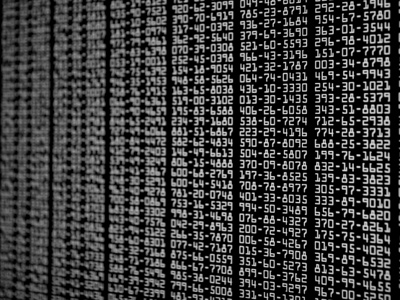
Ask the AI Tutor
Need help with Unit 4 - Range? Ask our AI Tutor!
AI Tutor - Lucy
Connecting with Tutor...
Please wait while we establish connection

If the range is large, the variation of the data is large.
Unit 4 - Range
GCSE Biology practicals often use the range to show how spread out results are. This quiz helps you practise interpreting data sets and judging how consistent they are.
1 .
If there is a very wide range of data for the same experiment, we say that the data is...
precise
unreliable
ranging
inaccurate
Range is taken as a measure of reliability when applied to the repeat results of an experiment
2 .
Which is the lower limit of this range of data?
22, 14, 16, 19, 11, 28
22, 14, 16, 19, 11, 28
11
15
16
17
The lower limit is the smallest number
3 .
If the range is large, we need to consider this.
Repeating the experiment many more times
Leaving it and working out the average
Changing the experiment altogether
Asking for more time
If the range is very wide, it could just be the method or it could be genuine biological variation. Repeating the experiment is the best way forward as a first step to double checking the data
4 .
The range will guide us about a valid comparison between our experimental results and the control. If the ranges do not overlap, we say that there is...
no difference
a significant difference
a fluke
a chance that they may be different
If there is no overlap between the ranges, the experimental group must be different from the control and therefore we have a clear cut difference
5 .
Calculate the range of the following data.
12, 14, 16, 13, 17, 19
12, 14, 16, 13, 17, 19
Six
Seven
Eight
Nine
The upper limit is 19, the lower limit is 12 so the range is 19 - 12 = 7
6 .
If the range is large, the variation of the data is...
large
small
insignificant
unchanged
The upper and lower limits are significantly different to each other and looking at possible reasons for a large spread of results could help you to suggest modifications to the experiment to increase reliability
7 .
The range is the same thing as this.
Average
Spread
Accuracy
Median
The range gives us a measure of the spread of the data
8 .
To calculate the range, we...
subtract the largest number from the smallest
subtract the smallest number from the largest
subtract the mean from the largest number
take an average
This is a way of expressing the range as a single figure
9 .
What is the upper limit of the following data?
15, 18, 25, 18, 45
15, 18, 25, 18, 45
15
18
25
45
The upper limit is the highest number
10 .
Which one of the following is the range of this data?
25, 16, 18, 10, 12, 16, 17
25, 16, 18, 10, 12, 16, 17
12 to 16
10 to 17
10 to 25
25 to 17
Remember, the range is the lowest to highest or vice-versa
**Unlimited Quizzes Await You! 🚀**
Hey there, quiz champ! 🌟 You've already tackled today's free questions.
Ready for more?
Ready for more?
🔓 Unlock UNLIMITED Quizzes and challenge yourself every day. But that's
not all...
not all...
🔥 As a Subscriber you can join our thrilling "Daily Streak" against other
quizzers. Try to win a coveted spot on our Hall of Fame Page.
quizzers. Try to win a coveted spot on our Hall of Fame Page.
Don't miss out! Join us now and keep the fun rolling. 🎉
**Unlimited Quizzes Await You! 🚀**
Hey there, quiz champ! 🌟 You've already tackled today's free questions. Ready for more?
🔓 Unlock UNLIMITED Quizzes and challenge yourself every day. But that's not all...
🔥 As a Subscriber you can join our thrilling "Daily Streak" against other quizzers. Try to win a coveted spot on our Hall of Fame Page.
Don't miss out! Join us now and keep the fun rolling. 🎉






